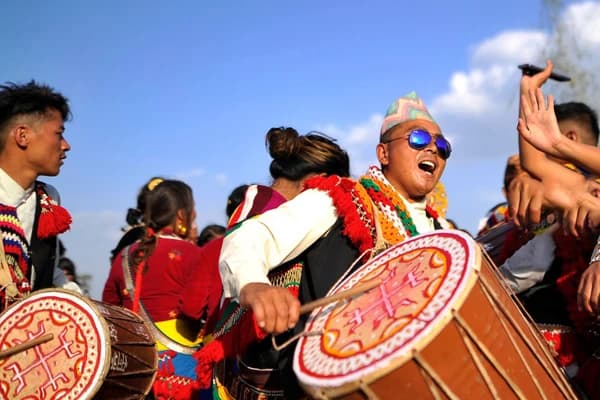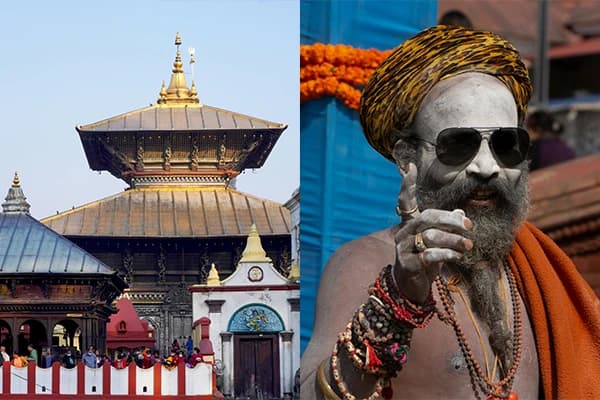Trekking grade category in Nepal
The trek grade in nepal can be categorized into four types based on the varying difficulty levels and durations of the trek. There are easy treks, moderate treks, difficult treks, and strenuous treks.
Physical Demands of Trekking
While trekking at medium to high altitudes, it is obvious that you may encounter various physical challenges. Thin air at higher elevations may cause difficulty in breathing. These problems are common while going trekking to areas like everest base camp, Annapurna Circuit, and so on.
The other demand of trekking is long hours of walking per day. On average, a normal trek requires 6–8 hours of walking. This can increase the physical demand because almost every trek requires walking through steep and uneven terrain.
In addition, the trekkers face problems caused by the unpredictable weather conditions. Slippery paths, landslides, and heavy problems require extra physical energy. These problems are common during the monsoon season.
Some of the problems seen if the physical demands of trekking are not met are headaches, nausea, muscle fatigue, mental fatigue, and shortness of breath. Some of the on-field solutions are acclimatization and gradual ascents.
Learning Altitude Acclimatization
Altitude sickness is a serious problem that normally occurs after going up to a higher altitude of about 2400 meters. Some of the common symptoms of altitude sickness are dizziness, headaches, shortness of breath, and so on.
So, to prevent altitude sickness, you need to practice altitude acclimatization. It helps in adapting to changing altitude levels where air pressure and oxygen levels decrease. Further, this practice promotes red blood cell production, which is important in oxygen transportation.
Some of the acclimatization processes include staying hydrated, descending to sleep at lower altitudes, making gradual ascents, doing light hikes before sleeping, taking rest days, and so on. Also, avoid alcohol and caffeine drinks to prevent dehydration and altitude sickness.
If you encounter the symptoms of altitude sickness in you or in your trekking partner, such as headaches, nausea, or fatigue, take rest and allow your body to recover. In extreme cases, supplemental oxygen can help aid acclimatization.
By following these tips, you can ensure your fitness requirements are maintained and do healthy trekking.
Nutrition and Hydration
Nutrition is an important part of fitness training and during trekking as well. While training, muscle spears and needs fast recovery. In this case, nutrition helps in muscle recovery and provides energy to the body.
Hydration helps in covering fluid requirements in the body, as during exercises, a large amount of fluid is lost through sweating. Also, rapid breathing and an increased heart rate caused by lower oxygen levels trigger fluid loss from your body.
Similarly, a large amount of energy is needed during trekking in high-altitude areas. Every day, you burn a large amount of calories doing strenuous activities. So, proper nutrition and hydration are necessary.
Some of the items, like energy bars, Forza Protein Bars, nuts, nut butter, bananas, dried fruits, and high-calorie snacks, are light in weight, easy to prepare and dense in nutrients. So, it can be useful in fulfilling nutritional requirements in the body.
In addition to these snacks, high-energy meals such as dehydrated meals, oatmeal, eggs, and fresh fruits and vegetables are also essential. Some other items, including carrots, fresh fruits, and veggies, can also add some extra nutrients to your diet.
Mental Preparation
Mental preparation is also an important part of overall body fitness. It is equally important to be mentally fit as it is to be physically fit. Along the way, you may encounter various problems that may challenge you mentally. So, fitness on a mental level is necessary.
One of the strategies is to develop mental resilience and perseverance. You must be mentally ready to face the challenges that come your way. Exercise can increase confidence and motivation.
Also, celebrating small milestones and acknowledging the hard work can help maintain a positive outlook. Try to focus on the present moment. Talking to your fellow mates and sharing experiences can also help during the trek.
One of the strategies that always works and needs to be done before starting your hiking journey is to visualize yourself facing the challenges and winning them. This helps boost inner confidence.
In addition, gathering all the necessary information, like weather forecasts and itinerary plans, can also help minimize stress and anxiety levels. Practice meditation and yoga; it will help you during the trekking.
Extra Training Tips for Trekking
Physical preparations are important while trekking in the remote areas of Nepal. It is to ensure your safe and enjoyable trekking experience. It is necessary to start training at least three to four months before your scheduled departure. It will allow your body to adapt to the demands and risks of trekking.
Some of the best training tips for trekking that will help you when starting to trek in remote areas are:
- Train in conditions just like during the trek
Train yourself for those conditions that you may face during the trekking journey. This will help you familiarize yourself with the trekking conditions. For example, try walking with trekking boots and a backpack on your back, mimicking walking with heavy loads.
Practicing climbing steep sections and mimicking trekking can help you gain knowledge about how your trek is going to be!
- Get used to your gear early
Buy all the necessary gear, like trekking boots, backpacks, and so on. Wear the trekking boots everywhere you go and get used to them. Similarly, practice carrying a backpack while doing practice hikes. Add more weight and walk carrying it.
- Do cardio training two to three times per week?
The reason I am saying to do cardio training two to three times per week is that it will train your body to work hard with less oxygen. Cardio workouts like walking, jogging, swimming, and cycling will focus on your aerobic capacity. These exercises also help keep your breath and focus at high elevations.
So, develop a habit and do at least two to three cardio sessions per week. You can also get help from YouTube, though there are several videos available related to this topic.
Give yourself proper time to train the body, and don’t save the training until the last moment. Start slowly, take the time, and slowly increase your training intensity and take the most out of your training.
- Keep records of your diets
Dieting is important and acts as fuel for your body. It is similar to adding bad-quality materials to your vehicles. It only reduces the overall life of your vehicle. The same thing happens with your body.
If you only eat without caring about nutrition, the result you want may not be seen. So, calculate the nutrient requirements for your body and try to add these nutrient-containing food items to your diet. Add some extra calories and proteins. It will help with muscle building and staying healthy.
- Learn a few stretching exercises to do before and after the trek
Stretching is not just for flexibility; it is also a good option to warm up and cool down your body. Stretching your body before a trek increases your flexibility, and stretching your body at the end of the trekking day helps you sleep better.
Stretches help increase peripheral blood circulation in your body, muscle relaxation, and stress release. So, it is one of the best tips to know before going on the trek.
- Taper off before your trek
Don’t push yourself just before the trek. Give your body time to rest for a few days. You can keep stretching. Stay active and fresh.
Sleep is very important. It is the time when your muscles recover. It is important both before and during the trek. Good sleep greatly affects how your mind and body respond to the stress of altitude.
Conclusion
Trekking in the Himalayan areas of Nepal can be adventurous as well as enjoyable if you prepare well and fulfill the requirements of fitness. Whether you go for the normal trek or the high-altitude trek, being fit and healthy is important.
Physical fitness can be fulfilled by doing various types of exercise and training before starting your trekking journey. For mental fitness and confidence, you can try visualizations, a positive mindset, planning all the itineraries according to your fitness level, and so on.
A fit and healthy body enhances comfortable trekking. Knowing the fitness requirements for trekking in Nepal and training your body and mind for the various challenges, you can ensure safe and comfortable trekking practices.





